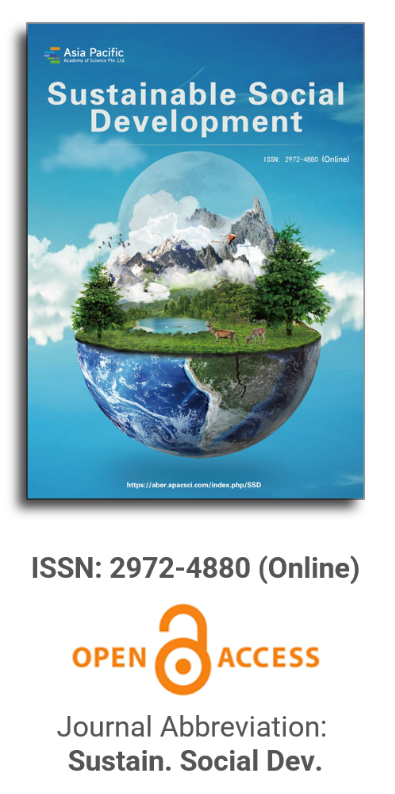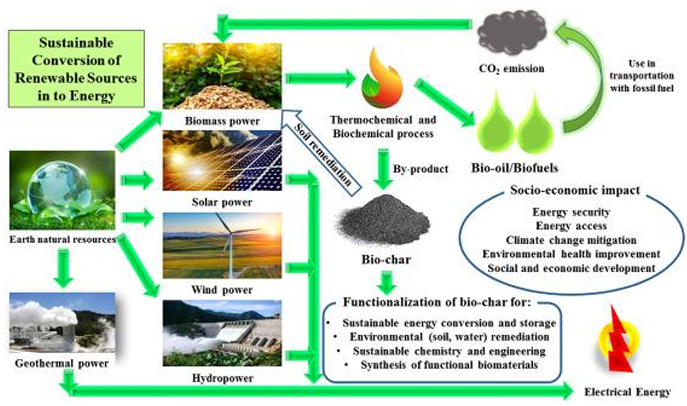
Asia Pacific Academy of Science Pte. Ltd. (APACSCI) specializes in international journal publishing. APACSCI adopts the open access publishing model and provides an important communication bridge for academic groups whose interest fields include engineering, technology, medicine, computer, mathematics, agriculture and forestry, and environment.

Developing a model for digital adoption in family business: A proposed research framework
Vol 2, Issue 3, 2024
Download PDF
Abstract
Digital technology is becoming more and more popular very quickly. This is changing every part of the business and having a big effect on how it works. Unfortunately, no business can avoid the effects, problems, and chances that come with digital change. Companies are also forced to change how they do things. Given this context, numerous organizations are unprepared to transform. There are no exceptions made for the family business. The family business is anticipated to embrace digitalization as a widely popular business technique in many locations globally. Its participation in the digital economy is still very important. Unfortunately, there are not many studies on how digital technology is used in family business. When compared to other types of businesses in general, the family business is distinguished by several distinctive qualities that set it apart from other types of enterprises. Consequently, there exists a tension between the perceived gradual nature of change in family businesses and the swift pace of digitalization. This discrepancy highlights the urgent need for further exploration into the integration of digital technology within the context of family businesses, as well as the development of strategies to support their successful digital transformation amidst these distinctive organizational dynamics. This research aims to identify the crucial aspects that contribute to the successful implementation of digitalization in the family business. The adopted research method for this study involves conducting a comprehensive literature review. This approach entails systematically reviewing and analyzing existing academic and industry literature on the utilization of digital technology in family businesses. This study proposes a research design to investigate the use of digital technologies in family businesses. The study also presents a suggested mixed-method approach, combining qualitative and quantitative methods and propositions.
Keywords
References
- Chua JH, Chrisman JJ, Chang EPC. Are family firms born or made? An exploratory investigation. Family Business Review. 2004; 17(1): 37-54. doi: 10.1111/J.1741-6248.2004.00002.X
- Eddleston KA, Kellermanns, FW, Sarathy R. Resource configuration in family firms: Linking resources, strategic planning and technological opportunities to performance. Journal of Management Studies. 2008; 45(1): 26-50. doi: 10.1111/J.1467-6486.2007.00717.X
- Kets de Vries MFR. The dynamics of family controlled firms: The good and the bad news. Organizational Dynamics. 1993; 21(3): 59-71. doi: 10.1016/0090-2616(93)90071-8
- Fan CW, Tan J, Guller E, et al. Asian Family Businesses Report 2011. Credit Suisse; 2011.
- Koentjoro S, Gunawan S. Managing knowledge, dynamic capabilities, innovative performance, and creating sustainable competitive advantage in family companies: A case study of a family company in Indonesia. Journal of Open Innovation: Technology, Market, and Complexity. 2020; 6(3): 90. doi: 10.3390/JOITMC6030090
- Poza EJ, Daugherty MS. Family Business, 5th ed. Cengage; 2018.
- Waldron J. The Digital Transformation of Traditional Family Businesses. Available online: https://metasfresh.com/en/2021/09/15/the-digital-transformation-of-traditional-family-businesses/ (accessed on 8 January 2024).
- Sigliano K. The Digital Transformation of Family Business: Legacy, Speed and Customers. Ie University; 2017.
- Tirdasari NL, Indrawan D, Fahmi I. Family business in agriculture: Challenge and strategy to face global business. Advances in Economics, Business and Management Research. 2019; 98: 155-158. doi: 10.2991/icot-19.2019.33
- Tirdasari NL, Dhewanto W. Family business succession in Indonesia: A study of hospitality industry. Procedia: Social and Behavioral Sciences. 2012; 57: 69-74. doi: 10.1016/j.sbspro.2012.09.1159
- Tirdasari NL, Dhewanto W. Family business succession of hospitality industry in Indonesia. Journal of Asia Pacific Business Innovation & Technology Management. 2014; 4: 21-29.
- Tirdasari NL, Dhewanto W. When is the right time for succession? Multiple cases of family businesses in Indonesia. Journal of Family Business Management. 2020; 10(4): 349-359. doi: 10.1108/JFBM-10-2019-0064
- Cahyadi A, Magda R. Digital leadership in the economies of the G20 countries: A secondary research. Economies. 2021; 9(1): 32. doi: 10.3390/economies9010032
- Calabro A, McGinness T. Mastering a comeback How family businesses are triumphing over COVID-19. Available online: https://assets.kpmg/content/dam/kpmg/xx/pdf/2021/03/family-business-survey-report.pdf#page=9 (accessed on 8 January 2024).
- Burt B, Choi S, Dixon J. Why digital transformation should be a family (business) affair. Available online: https://www.pwc.com.au/digitalpulse/family-business-survey-digital-transformation.html (accessed on 8 January 2024).
- Tagiuri R, Davis J. Bivalent attributes of the family firm. Family Business Review. 1996; 9(2): 199-208.
- Alici EN, Cengizoglu E. The Effect of Knowledge Management in Start-Ups: Exploring the Transition Process of a Start-Up from Temporary to a Permanent Organization. Umeå University; 2017.
- Easterby-Smith M, Thorpe T, Jackson P. Management Research, 4th ed. Sage Publications Ltd; 2012.
- Saunders MNK, Lewis P, Thornhill A. Research Methods for Business Students. In: Synthese. Pearson; 2019.
- Creswell JW, Clark VLP. Designing and Conducting Mixed Methods Research. Sage Publications; 2017.
- Nikraftar T, Hosseini E, Mohammadi E. The factors influencing technological entrepreneurship in nanotechnology businesses. Revista de Gestão. 2021; 29(1): 76-99.
- Hosseini SH, Hajipour E, Kaffashpoor A, Darikandeh A. The mediating effect of organizational culture in the relationship of leadership style with organizational learning. Journal of Human Behavior in the Social Environment. 2020; 30(3): 279-288.
- Tajpour M, Hosseini E, Alizadeh R. Entrepreneurship opportunities: The effect of social entrepreneurship on the presence of Afghan immigrant youth in Iranian universities. Migration Social Entrepreneurship and Social Inclusion. 2021; 1(15): 261-284.
- Ano B, Bent R. Human determinants influencing the digital transformation strategy of multigenerational family businesses: A multiple-case study of five French growth-oriented family firms. Journal of Family Business Management. 2021; 12(4): 876-891. doi: 10.1108/JFBM-12-2020-0117
- Brenk S, Lüttgens D, Diener K, Piller F. Learning from failures in business model innovation: Solving decision-making logic conflicts through intrapreneurial effectuation. Journal of Business Economics. 2019; 89(8-9): 1097-1147. doi: 10.1007/s11573-019-00954-1
- Dressler M, Paunovic I. Sensing technologies, roles and technology adoption strategies for digital transformation of grape harvesting in SME wineries. Journal of Open Innovation: Technology, Market, and Complexity. 2021; 7(2): 123. doi: 10.3390/joitmc7020123
- Pollák F, Markovič P. Size of business unit as a factor influencing adoption of digital marketing: Empirical analysis of SMEs operating in the central European market. Administrative Sciences. 2021; 11(3): 71. doi: 10.3390/admsci11030071
- Pöschl A, Freiling J. The impact of family-external business succession on digitalization: Exploring management buy-ins. International Journal of Information Systems and Project Management. 2020; 8(2): 24-46. doi: 10.12821/ijispm080202
- Rondi E, Massis AD, Kraus S. Servitization through open service innovation in family firms: Exploring the ability-willingness paradox. Journal of Business Research. 2021; 135: 436-444. doi: 10.1016/j.jbusres.2021.06.040
- Soluk J, Kammerlander N. Digital transformation in family-owned Mittelstand firms: A dynamic capabilities perspective. European Journal of Information Systems. 2021; 30(6): 676-711. doi: 10.1080/0960085X.2020.1857666
- Chatterjee S, Chaudhuri R, Vrontis D. Entrepreneurial behavior of family firms in the Indian community: adoption of a technology platform as a moderator. Journal of Enterprising Communities. 2021; 17(2): 433-453. doi: 10.1108/JEC-08-2021-0122
- Chung YCY, Chang HH, Kitamura Y. Digital and traditional media advertising and business performance of agribusiness firms-Empirical evidence in Japan. Agricultural Economics. 2021; 67(2): 51-59.
- Rashid S, Ratten V. A dynamic capabilities approach for the survival of Pakistani family-owned business in the digital world. Journal of Family Business Management. 2020; 10(4): 373-387. doi: 10.1108/JFBM-12-2019-0082
- Basly S, Hammouda A. Family businesses and digital entrepreneurship adoption: A conceptual model. The Journal of Entrepreneurship. 2020; 29(2): 326-364. doi: 10.1177/0971355720930573
- Cimini C, Boffelli A, Lagorio A, et al. How do industry 4.0 technologies influence organisational change? An empirical analysis of Italian SMEs. Journal of Manufacturing Technology Management. 2021; 32(3): 695-721. doi: 10.1108/JMTM-04-2019-0135
- Abi J, Arief M. Examining the relationship between transformational leadership and dynamic capability to the adoption of digital marketing in consumer shopping good firms. International Journal of Economics and Management. 2017; 11(2): 487-504.
- Elidjen L, Mihardjo WW, Rukmana RAN. Intervening Role of Innovation Management on Relationship between Digital Leadership and Dynamic Capability Accelerated by Collaboration. Primrose Hall Publishing Group; 2019.
- Kane GC, Phillips AN, Copulsky J, Andrus G. How Digital Leadership is(n’t) Different. Massachusetts Institute of Technology; 2019.
- Mihardjo LWWW, Sasmoko S, Alamsjah F, Elidjen E. Digital leadership role in developing business model innovation and customer experience orientation in industry 4.0. Management Science Letters. 2019; 9(11): 1749-1762. doi: 10.5267/j.msl.2019.6.015
Supporting Agencies
Copyright (c) 2024 Nyayu Lathifah Tirdasari, Wawan Dhewanto, Neneng Nurlaela Arief
License URL: https://creativecommons.org/licenses/by/4.0/

This site is licensed under a Creative Commons Attribution 4.0 International License (CC BY 4.0).

Prof. Kittisak Jermsittiparsert
University of City Island, Cyprus






It is with deep regret that we announce the cancellation of the Forum on Sustainable Social Development & Computing and Artificial Intelligence, originally scheduled for June 15, 2025.

